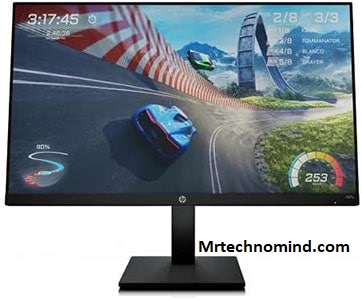1920×1080 Vs 2560×1440 – Which One Should I Choose?

Choosing the right monitor resolution can be a daunting task for many people. With so many options in the market, it’s easy to get confused about which one to choose.
Two of the most popular resolutions are 1920×1080 and 2560×1440, but deciding between them can be challenging. While both resolutions offer high-quality visuals, their differences make each suitable for different purposes.
In this article, we will dive into the details of 1920×1080 vs 2560×1440 and help you understand which is best for your needs. So, whether you’re a gamer or a professional looking for a new monitor, keep reading to find out which resolution is perfect.
1920×1080 Vs 2560×1440 – Which One Should I Choose?
Do you need help choosing 1080p and 2560×1440 resolution for your new monitor? Well, let me tell you, it’s like choosing between a bicycle and a sports car. Okay, not that extreme, but the difference is noticeable.
The 1080p resolution has been around for quite some time and is still widely used. It’s perfect for everyday use, such as browsing the internet, watching movies or TV shows, and even playing games. The image quality is good enough for most people, and the price is relatively affordable.
On the other hand, if you’re looking for a more immersive experience while gaming or doing graphic design work, then 2560×1440 resolution is worth considering. The extra pixels allow for sharper images and more detail in graphics. However, it comes with a higher price tag than its 1080p counterpart.
It depends on your needs and budget when deciding which one to choose.
1920×1080 Vs 2560×1440 – Everyday Use

| Resolution | Display Size Recommendation | Common Use Cases | Pros | Cons |
| 1920×1080 | Up to 24″ | Web browsing, document editing, general tasks | Budget-friendly, widely available, good for smaller screens | Less screen real estate, lower pixel density |
| 2560×1440 | 27″ and above | Web browsing, document editing, multitasking, media consumption | Higher pixel density, sharper image, more screen real estate | It can be more expensive, requires a larger display |
When choosing between 1920×1080 and 2560×1440 for everyday use, there are a few things to consider. Here are four factors that may help you make your decision:
- Screen Size: The resolution difference may not be noticeable if you have a smaller screen size, such as a laptop or a small desktop monitor. However, if you have a larger screen size, the higher resolution of 2560×1440 will provide sharper and clearer images.
- Multitasking: If you frequently multitask on your computer, the higher resolution of 2560×1440 can allow you to open multiple windows simultaneously without feeling cramped or overlapping.
- Budget: Higher-resolution screens tend to have a higher price tag. If budget concerns you, then 1920×1080 may be the more economical choice.
- Purpose: Consider what you will primarily use your computer for. If it’s mainly for browsing the web and basic tasks, then 1920×1080 should suffice. However, if you’re doing graphic design or video editing work, then the extra pixels of 2560×1440 can make all the difference in detail and clarity.
Ultimately, deciding between 1920×1080 and 2560×1440 comes down to personal preference and usage needs. However, remember that while higher resolution offers benefits in terms of image quality and multitasking ability, it also requires more processing power from your computer.
Regarding image quality, pixel density is another factor to consider when choosing between these resolutions. Let’s look at how this affects everyday use on your computer screen.
Pixel Density
![]()
| Resolution | Display Size (inches) | Pixel Density (PPI/DPI) | Description |
| 1920×1080 | 24″ | ~92 PPI/DPI | Standard HD resolution |
| 2560×1440 | 27″ | ~108 PPI/DPI | Quad HD (QHD) resolution |
| 3840×2160 | 32″ | ~138 PPI/DPI | Ultra HD (UHD) or 4K resolution |
| 5120×2880 | 27″ | ~218 PPI/DPI | Retina 5K resolution (Apple iMac) |
| 7680×4320 | 32″ | ~275 PPI/DPI | 8K resolution |
You may wonder about pixel density after considering the differences between 1080p and 2560×1440 resolution. Pixel density refers to the number of pixels per inch (PPI) on a screen, which affects how sharp and clear the image appears. Generally, higher pixel density results in a clearer picture, but it also requires more processing power and can strain your eyes if you sit too close to the screen.
To compare the pixel density of 1080p and 2560×1440 resolution, we can use a table:
Resolution | Screen Size | Pixel Density |
1080p | 24 inches | ~92 PPI |
2560×1440 | 27 inches | ~109 PPI |
Despite having a larger screen size, the 2560×1440 resolution has a higher pixel density than a smaller 1080p screen. This means images and text will appear sharper and more detailed on the higher-resolution monitor.
However, the resolution is only part of professional use, such as graphic design or photo editing. Other factors like colour accuracy and viewing angles are also important considerations. In the next section, we’ll explore these factors in more detail and help you decide which option is best for your needs.
Professional and Everyday Use

| Resolution | Display Size Recommendation | Professional Use Cases | Everyday Use Cases |
| 1920×1080 | Up to 24″ | Office work, document editing | Web browsing, general tasks |
| 2560×1440 | 27″ and above | Graphic design, photo editing | Web browsing, media consumption |
| 3840×2160 | 32″ and above | Video editing, CAD, 3D modelling | Document editing, media consumption |
The resolution you choose will depend on your specific needs for professional use. If you work in graphic design or video editing, a higher resolution, such as 4K, may be necessary to see details in images and footage accurately. However, if your profession does not require such a high level of detail, a 2560×1440 resolution may suffice.
A 2560×1440 resolution is more than enough for everyday use for most tasks. Whether browsing the web, watching videos, or working on documents, this resolution provides a clear and crisp display without draining too much power from your device. Additionally, it is more affordable compared to higher solutions like 4K.
When choosing between different resolutions, it’s important to consider factors such as your budget and personal preferences. Here are some pros and cons of each:
Resolution | Pros | Cons |
2560×1440 | More affordable than higher resolutions | It may not be suitable for professions requiring a high level of detail |
Resolution | Pros | Cons |
4K | Provides an incredibly detailed display | Expensive compared to lower resolutions; requires powerful hardware |
Let’s move on to the next section, where we compare these resolutions for gaming purposes.
1920×1080 Vs 2560×1440 – Gaming

| Resolution | Display Size Recommendation | Refresh Rate | Gaming Use Cases |
| 1920×1080 | Up to 27″ | Up to 240Hz | Competitive gaming, fast-paced games |
| 2560×1440 | 27″ and above | Up to 165Hz | Immersive gaming, visually demanding games |
When choosing between 1920×1080 and 2560×1440 for gaming, there are a few things to consider.
The higher resolution of 2560×1440 will provide more detail and better image quality, but it also requires a more powerful graphics card to run smoothly.
On the other hand, 1920×1080 is still an excellent option for gaming and is more affordable.
Another factor to consider is the size of your monitor.
If you have a smaller screen, such as 24 inches or less, then 1920×1080 should be sufficient.
However, if you have a larger monitor or prefer a more immersive gaming experience, then 2560×1440 may be worth the investment.
Ultimately, the decision between 1920×1080 and 2560×1440 comes from personal preference and budget.
It’s essential to weigh the pros and cons of each option and consider how they will impact your overall gaming experience.
Frequently Asked Questions
1. Does the Resolution Affect the Battery Life of My Device?
The resolution of your device can indeed affect its battery life.
Higher resolutions require more processing power and, therefore, more energy, draining your battery faster.
However, the impact on battery life may vary depending on the device and its display settings.
It’s crucial to balance the benefits of a higher resolution with the potential drawbacks of decreased battery life and ultimately choose a solution that suits your needs while providing good battery performance.
2. What is the Impact of the Resolution on the Price of the Device?
The impact of resolution on the price of a device can be significant. Generally, higher-resolution screens come at a higher cost, requiring more advanced technology and larger pixels.
However, other factors such as brand name, screen size, and additional features also play a role in determining the final price point.
It’s important to consider all aspects when purchasing to ensure you get the best value for your money.
3. Can I Upgrade the Resolution of My Device?
Upgrading the resolution of your device is a tricky task. While it may be possible to switch out a lower resolution screen for a higher one, there are several factors you need to consider first.
For instance, will your device’s hardware handle the new resolution? Will your graphics card support the new display? These are just some questions you’ll need to ask before upgrading.
However, if you’re willing to take on the challenge and make some necessary adjustments, upgrading your device’s resolution can enhance your viewing experience.
As they say, sometimes you must leap of faith to achieve greatness!
4. How Does the Resolution Affect the Performance of My Device?
The resolution of a device can have a significant impact on its performance. Higher resolutions require more processing power from the device’s graphics card, which can lead to slower frame rates and decreased overall performance.
Additionally, higher resolutions may require more memory to store and render images and videos, which can also affect performance.
It’s essential to consider your device’s specs and intended use when deciding on a resolution upgrade.
5. What Are the Differences in the Viewing Angles Between the Two Resolutions?
Let’s say you’re in the market for a new monitor, and you’ve narrowed it down to two options: one with a resolution of 1920×1080 and another with 2560×1440.
When it comes to viewing angles, there are noticeable differences between the two. The higher-resolution monitor will generally have a wider viewing angle, meaning you can see the screen clearly from different positions without colour distortion or loss of picture quality.
On the other hand, the lower-resolution monitor may exhibit colour shifts or changes in brightness when viewed from an angle.
So, if you plan on sharing your screen with others or frequently moving around while working, choosing a higher resolution might be your best bet for optimal viewing angles.
Conclusion
In conclusion, the choice between 1920×1080 and 2560×1440 resolution ultimately depends on your preferences and needs.
If you prioritize longer battery life and a lower price, 1920×1080 might be your better option.
However, if you value a sharper and more detailed display with improved viewing angles, then 2560×1440 is the way to go.
Ask yourself: what matters most to me in my device? Is it the battery life’s longevity or the visual display’s quality?
By answering this question, you can decide which resolution is best suited for your lifestyle.
Remember that choosing a higher resolution may come at a cost, but it could also enhance your overall user experience.